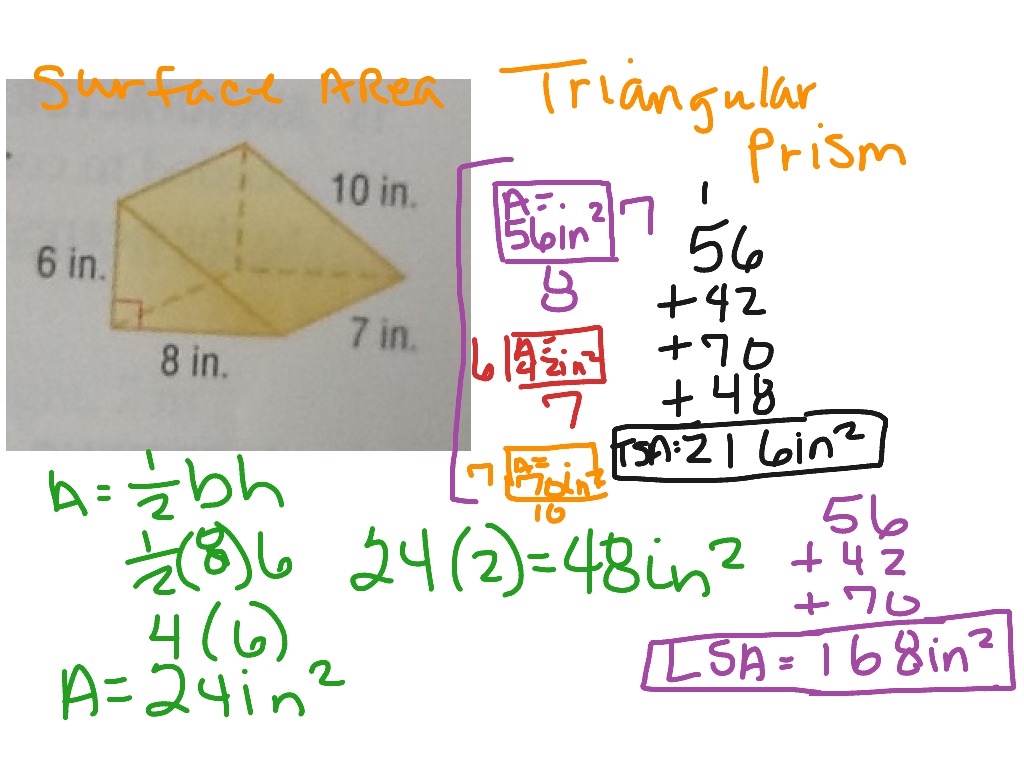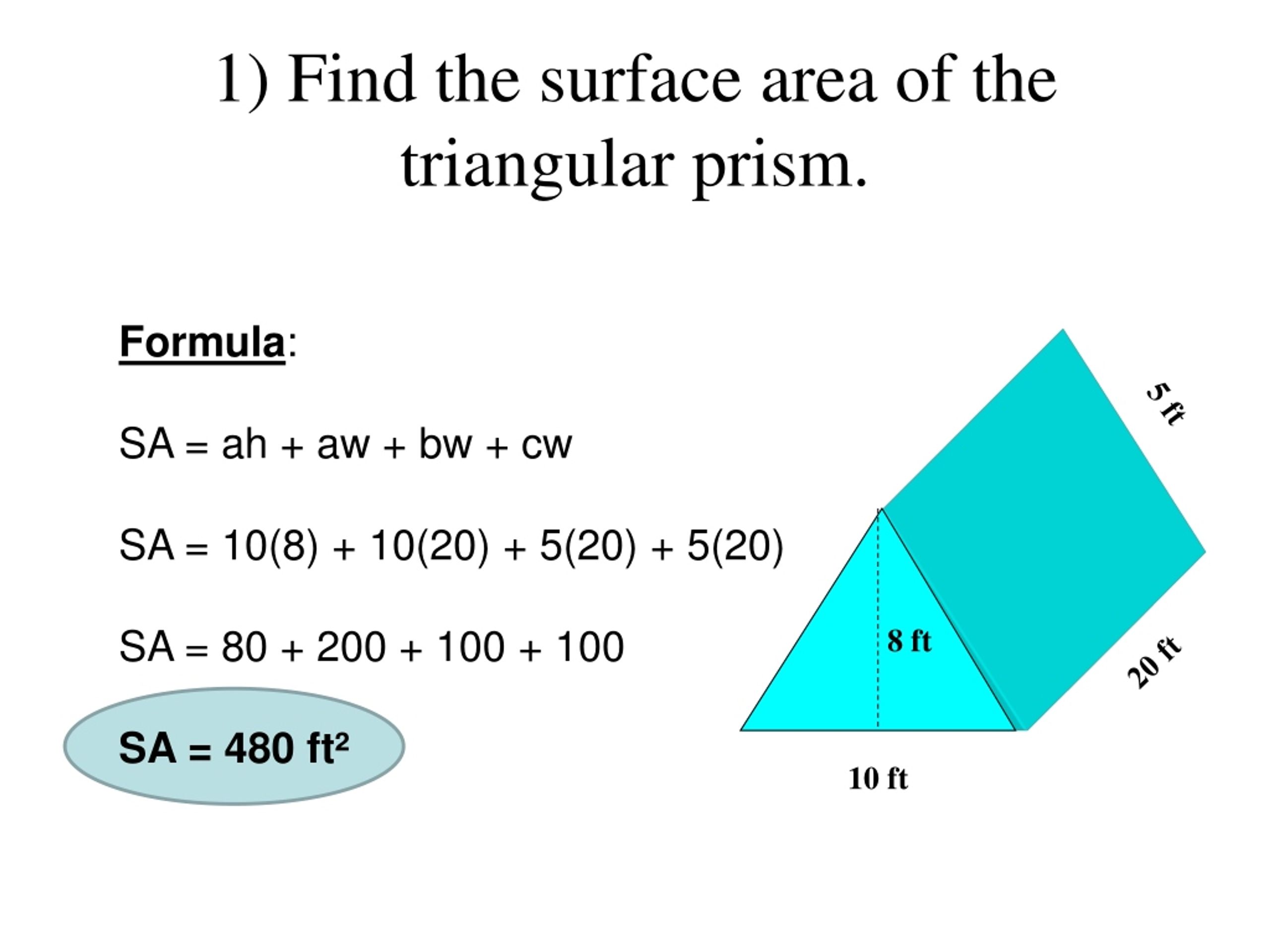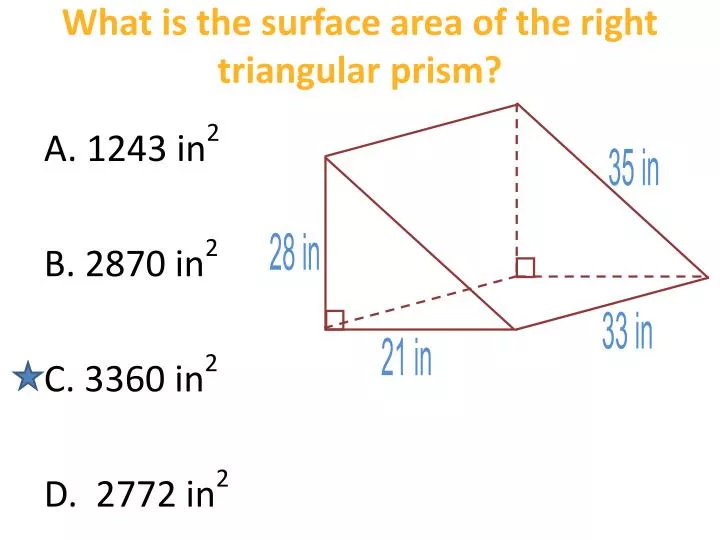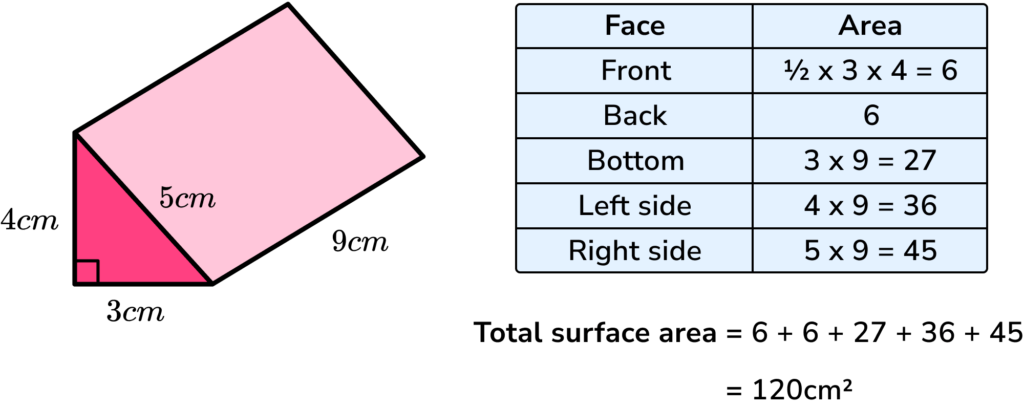

If the triangle's base 'b' and height 'h' are given, then its area = (1/2) bh.

If the base triangle is an equilateral triangle (in this case, the prism is called equilateral triangular prism) with each side 'a', then its area = √3a 2/4.The following list shows the formulas to find the area of the base triangle. Here, we can find the area of the base triangle based on its type and the available information. By applying the above formula to a triangular prism, we get, Volume of a triangular prism = area of base triangle × length of the prism We know that the base of a triangular prism is a triangle. We will use this formula to calculate the volume of a triangular prism as well. The volume of a prism = base area × length of the prism The volume of any prism is obtained by multiplying its base area by its length. We will see the formulas to calculate the volumes of different types of triangular prisms. It is measured in cubic units such as cm 3, m 3, in 3, etc. The volume of a triangular prism is the space inside it or the space occupied by it. Observe the triangular prism shown above where 'b' is the base of each side of two congruent triangles, 'h' is the height of the base triangle, and 'l' is the length of the prism. It is represented by "l" in the figure given below. The length of the triangular prism is the perpendicular distance between the centers of the two bases. 3 side faces (which are congruent rectangles).


A triangular prism is a three-dimensional body having two triangular bases connected by three rectangular sides.Given below are the main characteristics of a Triangular prism.


 0 kommentar(er)
0 kommentar(er)
